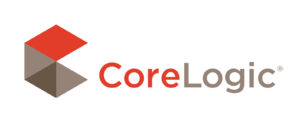Insurers that constantly face nature’s unpredictable fury must also manage claims in a way that covers policyholder damage and also maintains reserves for future events. In the case of hail damage claims, wide-ranging variations can occur from one year to the next. Such broad variations, coupled with the high cost of hail damage claims, requires that every insurer safeguard against claims fraud by employing the most effective event verification and inspection processes possible.
The History of Hail Verification
The National Severe Storms Laboratory (NSSL) hail-detection algorithm (HDA) is a public-safety forecasting tool developed by the NSSL to improve National Weather Service (NWS) storm warnings [1]. The algorithm attempts to predict whether severe hail is possible in the near future, so that the NWS can issue storm warnings to help protect lives and property.

In the past, due to the lack of options in the market, this algorithm was widely adopted and re-purposed as the default tool for forensic hail verification. Although useful in predicting whether or not hail will soon fall, it was not designed specifically for verification, and therefore, is not sufficiently adequate for estimating the size of hail that actually impacts the ground. To fulfill the needs of the market, insurers need a state of the art, proprietary hail verification science to do exactly this—provide the best and most effective hail event verification possible.
Hail Verification Science at Work
Using NWS radar data, combined with observed hail measurements, CoreLogic can effectively analyze the unique reflectivity-to-hail size relationship for each individual storm. The moment hail hits the ground is an  important piece of information for most commercial users as that directly correlates with how it impacts both the property and the homeowner (Figure 1). As radar scans are only available every two to five minutes, the hail verification science from CoreLogic uses a sophisticated physics-based morphing algorithm to continuously fill in the reflectivity in data gaps every few seconds. By then analyzing the unique reflectivity-to-hail-size relationship for each storm, it produces accurate hail path and size data. Because no two hail storms are similar, this verification science adapts its analysis to each specific storm and its unique changes over time.
important piece of information for most commercial users as that directly correlates with how it impacts both the property and the homeowner (Figure 1). As radar scans are only available every two to five minutes, the hail verification science from CoreLogic uses a sophisticated physics-based morphing algorithm to continuously fill in the reflectivity in data gaps every few seconds. By then analyzing the unique reflectivity-to-hail-size relationship for each storm, it produces accurate hail path and size data. Because no two hail storms are similar, this verification science adapts its analysis to each specific storm and its unique changes over time.
The hail verification science was designed as a forensic verification tool. Since this science was created to verify hailfall, it is less susceptible to the problems that make the widely accepted NSSL algorithm[2] unsuitable for verification. Specifically, the hail verification science:
- Uses radar data nearest to the ground, where hail impacts life and property
- Investigates the unique reflectivity-to-hail size relationship for every storm
- Eliminates hail-coverage gaps by using a sophisticated morphing algorithm to calculate continuous radar data
- Calculates unbiased hail size, since it is designed as a verification tool.
One Size Doesn’t Fit All
It is important to note that there is no one-size-fits-all algorithm for all hail data needs, so it is best to choose the appropriate technology based on the required use. Since CoreLogic® designed a proprietary hail verification science specifically to analyze the size and location of actual hailfall, industry leaders can confidently choose this science for forensic verification.
To Learn more about how our hail technology works, download the whitepaper.
[1] Witt, A., M.D. Eilts, G.J. Stumpf, J.T . Johnson, E.D. Mitchell, and K.W. Thomas, 1998a: An enhanced Hail Detection Algorithm for the WSR-88D. Wea. Forecasting, 13, 286-303.





















 Trump Signs Order Seeking to Limit State-Level AI Regulation
Trump Signs Order Seeking to Limit State-Level AI Regulation  Aon Adds to List of Brokers Suing Howden US for Alleged Poaching, Theft
Aon Adds to List of Brokers Suing Howden US for Alleged Poaching, Theft  Examining 5 Key Factors Fueling MGA Growth—and Emerging Challenges Ahead
Examining 5 Key Factors Fueling MGA Growth—and Emerging Challenges Ahead  Executives on the Move at HSB, American Modern Insurance Group, AIG
Executives on the Move at HSB, American Modern Insurance Group, AIG 